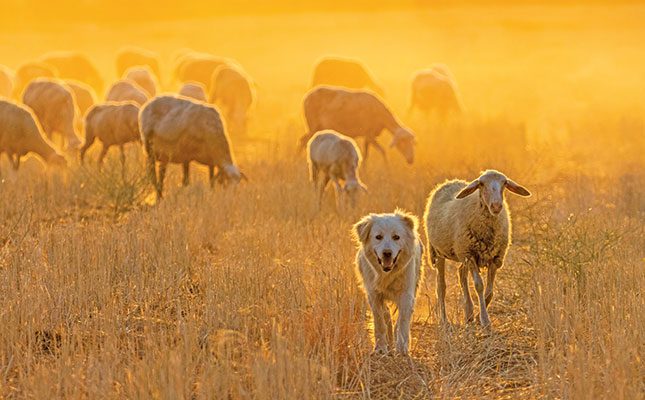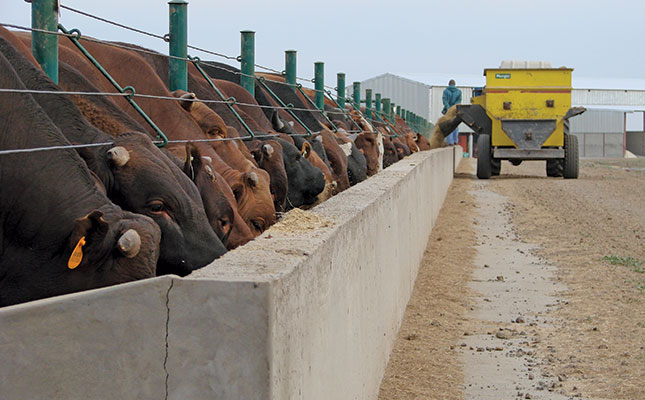
Photo: Pixabay
It is fascinating that over the years the dog training industry has learnt, acknowledged, and moved forward. Unfortunately, some trainers want to turn a blind eye to more recent studies and stick to outdated and backward theories.
And some, like modern-day parents, have gone to the complete opposite side of the scale, which is possibly just as bad.
Anyone can deduce their own theories from what they have observed, but we won’t know until dogs learn to speak and tell us what the best way of training is.
I know we all tend to anthropomorphise our dogs much more than we should, but it’s hard not to see more intelligence in a dog’s eye then they have been given credit for.
READ Tips to take care of your farm dog
For example, my male Belgian Malinois is a fantastic dog and well-socialised, but sometimes I swear he just grumbles at people to make them jump. Nevertheless, here is my theory on pack structure and dominance and how we should treat our dogs.
According to the Journal of the Experimental Analysis of Behaviour, the naturalist Charles Darwin believed that dogs had the mental capacity to have emotions like love, fear, shame, rage and even to dream. He also wrote that dogs had the ability to imitate and reason.
These theories, although corrected by modern research, are understandable and many dog owners would tell you their dogs have human-like emotions.
Some of Darwin’s theories have also been proved and reinforced by modern theories, such as dogs imitating behaviour. Some believe that confident dogs display submissive behaviour, imitating submission to diffuse a tense meeting. This kind of intelligence isn’t a surprise for dog owners but may seem far-fetched for others.
I believe dogs have a higher emotional intelligence. After being associated with humans for thousands of years, it wouldn’t be far-fetched to think that dogs also may have learnt behaviours which imitate emotions, which us humans interpret as emotion, but are simply learned behaviours.
For example, a dog coming to cuddle and show affection may not necessarily be feeling affection, but has simply learnt that cuddling up to its owner will get its ear scratched.
According to a sociological study in the early 1990s, dog owners come to regard their pooches as unique individuals and consciously behaved to achieve certain goals in the human-dog relationship.
This is hard to argue with and is most likely still the general opinion of dog owners. Does this give the dog dominance over its owner?
Where people work towards pleasing their dogs it may appear the human is controlling the dog, but who is actually in control, in terms of the pack structure and dominance theory with dogs?
Dr Frank Beach performed a 30-year study on dogs at Yale and UC Berkeley. Nineteen years of the study were devoted to social behaviour of a dog pack, not a wolf pack. His findings showed male dogs have a rigid hierarchy.
Females have a hierarchy, but it’s more variable. When you mix the sexes, the rules get mixed up. Males try to follow their constitution, but the females have ‘amendments’.
Puppy licence
Young puppies have ‘puppy licence’ to do almost anything. Females are more tolerant of puppy licence than males are.
The puppy licence is revoked at about four months. At that time, the older middle-ranked dogs give the puppy hell – psychologically torturing it until it offers all of the appropriate appeasement behaviours and takes its place at the bottom of the social hierarchy.
The top-ranked dogs ignore the whole thing. There is no physical domination; it is accomplished through psychological harassment and is all ritualistic.
A small minority of ‘alpha’ dogs assume their position by bullying and force. But those that do, are quickly deposed. No one likes a dictator.
The vast majority of alpha dogs rule bene-volently. They are confident in their position. They do not stoop to squabbling to prove their point; to do so would lower their status.
Middle-ranked animals squabble. They are insecure in their positions and want to advance over other middle-ranked animals.
Low-ranked animals do not squabble. They know they would lose. They know their position, and accept it.
Alpha dogs
‘Alpha’ does not mean physically dominant. It means ‘in control of resources’. Many alpha dogs are too small or frail to physically dominate but they have earned the right to control the valued resources.
An individual dog determines which resources he considers important. Thus an alpha dog may give up a prime sleeping place because he simply couldn’t care less.
I tend to err on the side of Beach’s observations. I think if dogs are left alone to their own devices and even in a human family, you will find they establish hierarchies. There will always be a dog that eats first, takes control of the water bowl or stands at the door in everyone’s way.
I fully agree with the definition of alpha as ‘in control of resources’; we have all see small little dogs controlling resources from other bigger dogs.
The old school linear hierarchy structure is obviously flawed – this most of us can agree with, but when it comes to a family environment with multiple humans and multiple dogs, there is surely some sort of pecking order or pack structure that dogs and humans abide by.
Lines of communication for me is the biggest issue: if the humans aren’t understanding the body language of the dogs, there are bound to be issues.
Dogs may not completely understand their position and they probably get mixed signals; the humans don’t understand the dogs and thus don’t communicate correctly, and hence there are issues such as aggression and poor obedience.
So how should a dog be treated in the home, and what is the pack structure?
The human-dog relationship is complex and not easily conveyed and even demonstrated. There will always be new and unique interactions that may or may not be dealt with correctly.
For the large part though, I feel that humans should interact with dogs much the same as dogs interact with each other.
Thus, humans should make a concerted effort to understand canine body language and communication.
The human should take the role as alpha in terms of controlling resources, and not necessarily handing out physical dominance. Dogs are smart enough to not ‘bite the hand that feeds them’, and so by controlling resources, the need for positive punishment is negligible.
The dog should feel comfortable, safe, and loved in a home. Access to resources is largely controlled by the human, but if the dog takes control by itself then it is corrected.
In correction in the form of negative punishment, a certain level of respect is then gained by the alpha figure, and the rest of the pack is structured, as observed by Beach.
READ How to keep your farm secure while you’re away on holiday
For example, taking food off the kitchen counter will land the dog outside with no access to the inside resources like humans, the couch and affection. For an emotionally intelligent dog, this should be punishment enough.
As soon as dogs are allowed to control their own access to resources, they will start trying to take the alpha role. This is natural as every animal on earth strives to better itself. This is where conflict happens, and issues such as aggression arise.
Sensitive to humans
According to veterinary researcher Judith Benz-Schwarzburg, it can be cautiously assumed that dogs have acquired special sensitivity to human gestures, speech and behaviour.
It is only fair and correct that we as humans become more acutely aware of canine communication. Through history the best results have formed from clear and two-way communication, so why shouldn’t we take the same approach with dogs?
Although there is a lot of anthropomorphising of dogs, we should be putting more effort into educating people to understand their dogs better, and be more like their dogs rather than trying to make the dogs more human.
It is hard to come up with a definite and clear explanation of what the pack structure and interactions are.
The dominance theory is one that has been so twisted over the years that everyone understands it differently. There is certainly dominance and a pack structure when it comes to dogs; how humans fit in, is extremely subjective.
If humans would put more effort into communicating with their dogs and understanding the canine body language, we would have fewer issues.
It is my understanding that if humans took a less physically dominating role and more of a resource-dominant role, where good behaviour is positively reinforced and bad behaviour is negatively punished, we would have a smoother and ultimately a happier pack structure with our dogs.
Email Jarred Hodgson at [email protected], or call him on 073 043 4421.
Visit hddtk9services.co.za.











